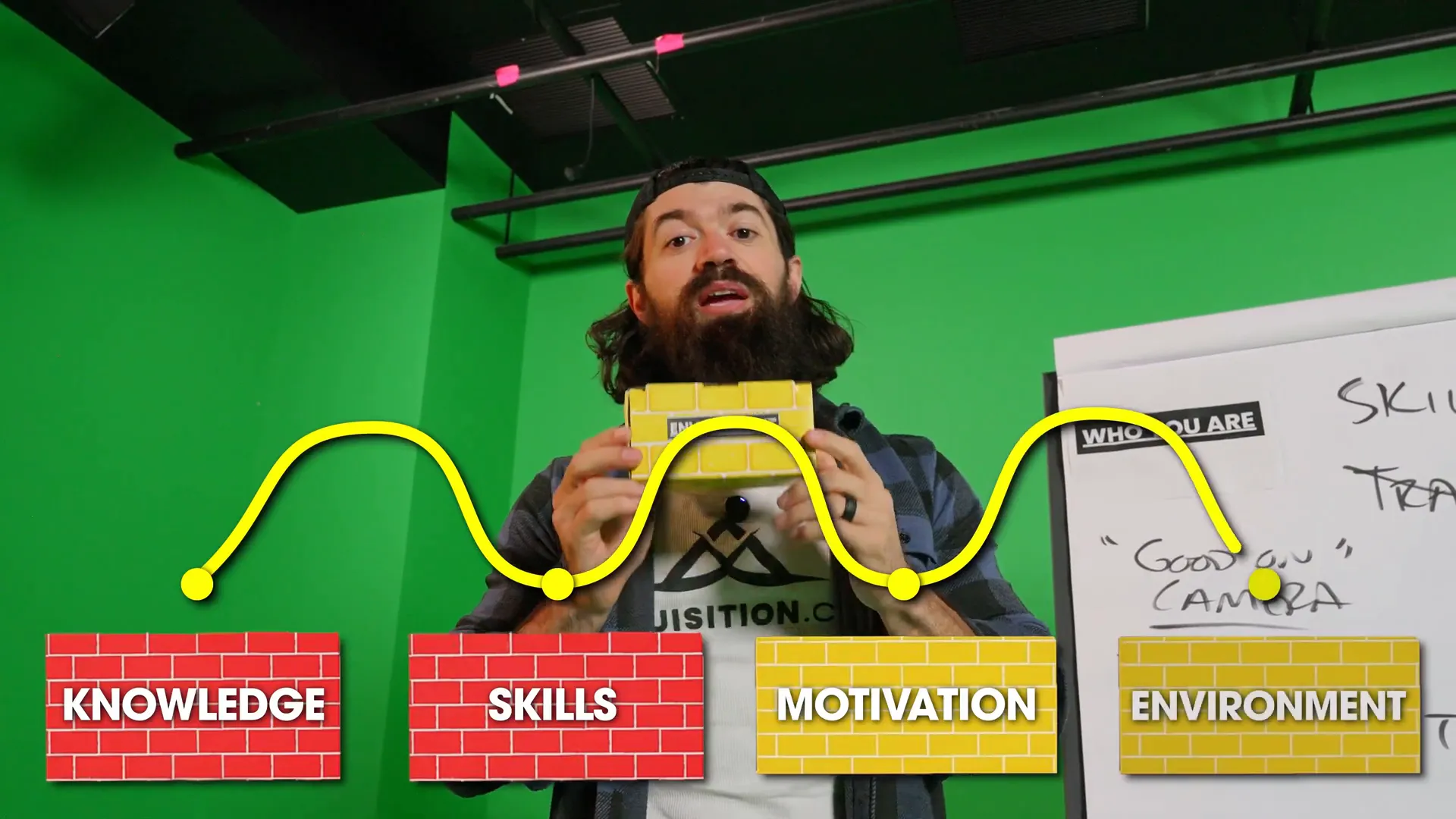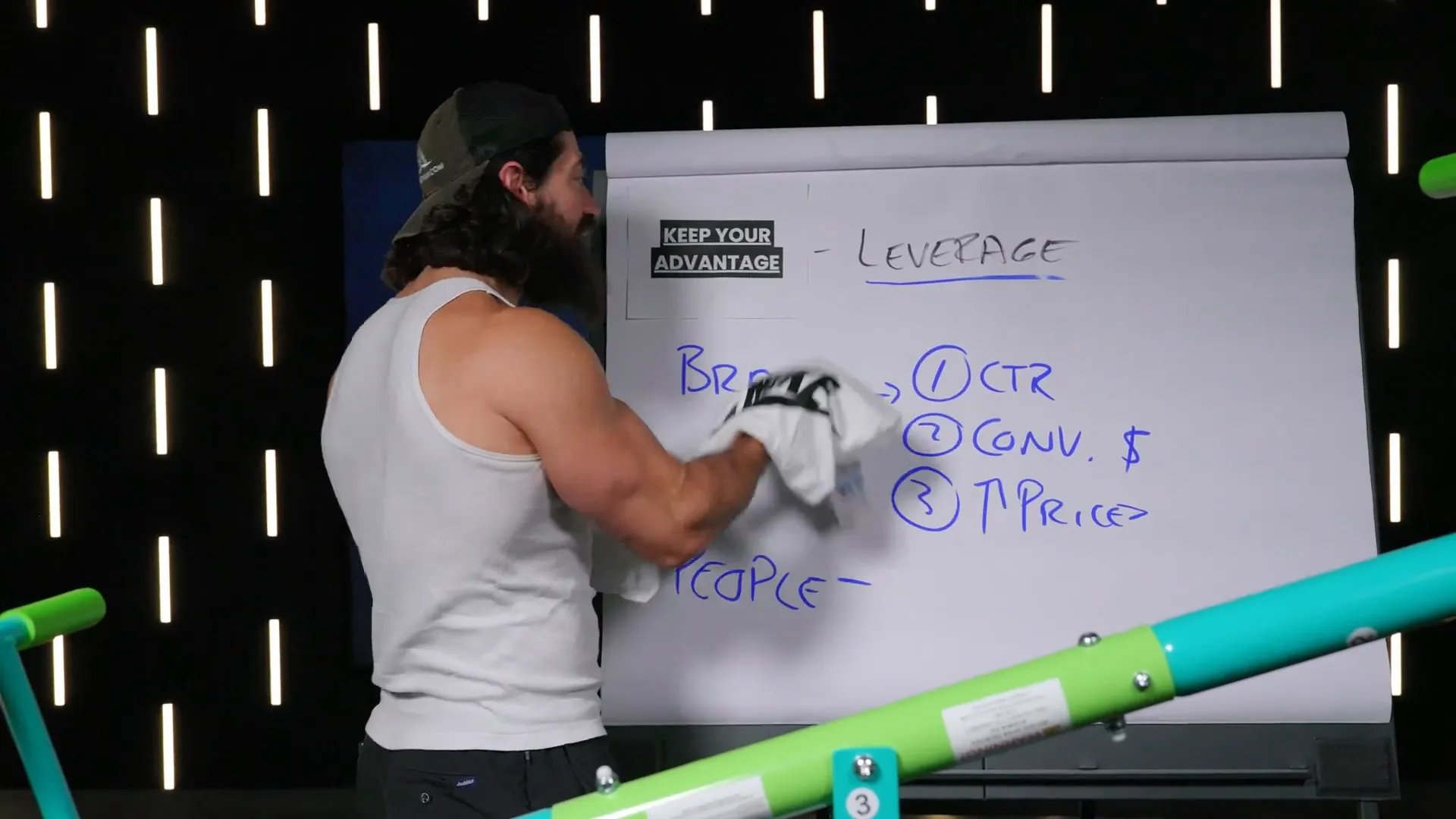May 20, 2025
The Ultimate Blueprint to Becoming a Millionaire by 2025
In this comprehensive guide, we’ll explore the step-by-step blueprint to achieving your first million dollars, regardless of your starting point. From understanding the fundamentals of who you are to mastering the art of sales and scaling your business, this blueprint will equip you with the knowledge and strategies necessary for financial success.
Introduction to the Blueprint
The journey to financial success begins with a solid understanding of the blueprint that guides you. This blueprint is structured into three core levels, with the first level focusing on the fundamentals of who you are. Understanding yourself lays the groundwork for everything you aspire to achieve.
Level 1: Understanding Who You Are
Your identity is the foundation upon which you build your wealth. This level comprises four essential components: knowledge, skills, motivation, and environment. Each aspect plays a critical role in shaping your journey towards becoming a millionaire.
The Importance of Knowledge
Knowledge is the first pillar in this framework. To become a millionaire, it's vital to understand what that truly means. A millionaire is someone who has over $1 million in investable assets, excluding their primary residence. Understanding this definition is crucial as it sets the stage for your financial goals.

Did you know that one out of nine Americans is a millionaire? What distinguishes these individuals is their awareness of opportunities that others may overlook. Your mindset and the information you possess are pivotal in determining your path to wealth.
Skills: The Building Blocks of Success
Skills are the tools that allow you to navigate your journey. It's essential to recognize that traits such as confidence or charisma are not inherent qualities but rather a collection of skills. For instance, if you wish to excel in sales, you must develop various sub-skills like active listening, effective communication, and persuasive techniques.

Mastering these skills not only positions you for success but also lays the groundwork for more advanced skills, such as marketing. Marketing amplifies your sales efforts, enabling you to reach a larger audience. As you accumulate skills, your value increases, opening doors to greater opportunities.
Motivation: The Driving Force
Motivation is often born from a sense of deprivation. The desire to change your circumstances fuels your drive. If you lack financial resources, this void can inspire you to take action. Surrounding yourself with individuals who have achieved the financial success you seek can enhance your motivation and create a reference group for comparison.

Believing in yourself is paramount. Your self-belief must overshadow the doubts of others. This internal conviction will propel you forward, even when faced with skepticism from those around you.
Creating an Optimal Environment
Your environment plays a crucial role in your success. Consider it as either a friction point or a lubricant for your goals. A conducive environment can facilitate positive behaviors and actions, while a negative one can hinder your progress.

To foster an optimal environment, make conscious choices about your surroundings. Engage with people who inspire you, and seek out spaces that encourage productivity and growth. These changes can significantly impact your ability to achieve your financial goals.
As you embark on your journey, remember that understanding who you are is the first step. Embrace the knowledge, develop your skills, cultivate motivation, and create an environment that supports your ambitions. Start today by setting clear goals for your business and personal development.
Identifying Your Target Audience
Understanding your target audience is crucial for your business's success. It's not just about demographics; it's about connecting with individuals who resonate with your product or service. This connection drives sales and fosters loyalty.

The Three Circles of Targeting
To effectively identify your audience, consider these three circles:
- Pain: Help individuals who have experienced a challenge similar to yours. Share your journey and solutions.
- Passion: Focus on areas you are genuinely passionate about. Your enthusiasm will attract like-minded customers.
- Profession: Utilize your professional skills to help others improve in those areas.
By identifying which circle resonates most with you, you can narrow down your target audience effectively. It's often easier to start with fewer clients who pay more, which allows you to build a sustainable business model.
Choosing What to Sell
Once you’ve identified your audience, the next step is determining what products or services to offer. The best offerings are unique, expensive, sticky, and scalable.

The Four Elements of a Successful Product
- Unique: Ensure your product stands out. This prevents competitors from easily replicating it.
- Expensive: Higher-priced items yield greater profit margins, making it easier to reach your financial goals.
- Sticky: Aim for products that encourage repeat purchases. This builds a loyal customer base.
- Air: Focus on offerings that are low-cost to deliver, maximizing your profit margins.
For example, Coca-Cola exemplifies these principles. Its unique formula, relative affordability, and high demand create a sticky product that customers continue to purchase throughout their lives.
Level 2: Getting Customers to Buy
Now that you have a product, the focus shifts to converting interest into sales. This involves two vital steps: making potential customers aware of your offering and persuading them to make a purchase.

Core Strategies for Finding Customers
Utilize the following strategies to attract customers:
- Warm Outreach: Reach out to people who already know you. They are more likely to trust your offerings.
- Cold Outreach: Contact individuals who are unfamiliar with your brand. This expands your reach.
- Content Creation: Share valuable content that showcases your expertise and engages your audience.
- Paid Advertising: Invest in ads to reach a broader audience quickly.
These strategies can be combined for maximum effect. For instance, use content to warm up cold leads, making them more receptive to your sales pitch.
The Art of Closing Sales
Closing a sale is an essential skill for any entrepreneur. It’s about guiding potential customers through a journey from awareness to purchase.

The Closer Framework
This framework will help you effectively close sales:
- Clarify: Understand why the customer is interested in your offering.
- Label: Identify the customer's problems and label them accurately.
- Overview Past Pain: Discuss past experiences that highlight the pain points the customer is facing.
- Sell the Vacation: Instead of detailing the product, paint a picture of the benefits and outcomes.
- Explain Away Concerns: Address any hesitations the customer may have.
- Reinforce the Decision: Confirm that the customer made a smart choice in purchasing your product.
By following this framework, you can effectively guide customers toward making a purchase and ensure they feel confident in their decision.
Increasing Customer Lifetime Value
Once you’ve made a sale, the goal is to maximize the customer’s lifetime value. This means keeping them engaged and encouraging repeat purchases.

Strategies for Enhancing Customer Loyalty
- Offer Exceptional Service: Providing outstanding customer service encourages repeat business and referrals.
- Engage Regularly: Use email marketing or social media to stay in touch with customers and keep your brand top-of-mind.
- Introduce Loyalty Programs: Implement programs that reward repeat purchases. This incentivizes customers to return.
- Solicit Feedback: Regularly ask for customer feedback to improve your offerings and demonstrate that you value their opinions.
By focusing on these strategies, you can significantly increase the lifetime value of your customers, contributing to your overall financial success.
As you navigate these steps, remember that setting clear goals for your business is vital. Embrace the journey, adapt as needed, and pursue your vision with determination.
Level 3: Scaling Your Business
Once you have established a stable foundation, the next step is to scale your business effectively. This involves leveraging your existing resources, optimizing processes, and creating systems that allow for growth without sacrificing quality. Scaling is not just about increasing revenue; it's about building a sustainable business model that can thrive in the long term.
Leveraging Brand and Reputation
Your brand is one of the most powerful assets you can have. A strong brand not only helps you stand out in a crowded market but also builds trust with your audience. When people recognize and trust your brand, they are more likely to engage with your products or services.

Consider the impact of a positive reputation on your business. A well-regarded brand can command higher prices, attract better talent, and foster customer loyalty. To build a strong brand, focus on delivering consistent value and excellent customer service. Engage with your audience authentically, and ensure that your messaging aligns with your brand values.
Building a Strong Team
As your business grows, so does the need for a competent team. Surround yourself with individuals who share your vision and possess the skills necessary to drive your business forward. A strong team is vital for scaling effectively.

Invest time in hiring the right people and fostering a positive company culture. Encourage collaboration and open communication among team members. Providing opportunities for professional development can also enhance skills and motivate your team, leading to increased productivity and innovation.
Maintaining Focus and Avoiding Distractions
In the journey of scaling a business, distractions can derail your progress. It's essential to maintain focus on your goals and prioritize activities that drive growth. Regularly assess your objectives and ensure that your daily actions align with your long-term vision.

Establishing boundaries is crucial. Learn to say no to opportunities that do not align with your core mission. Remember the analogy of the woman in the red dress; it represents distractions that can divert your attention from what truly matters. Stay committed to your goals, and don't let temporary opportunities lead you off course.
Continuous Learning and Improvement
The business landscape is ever-evolving, and to stay ahead, you must commit to continuous learning. Regularly seek out new knowledge, skills, and strategies that can enhance your business operations.

Engage in self-reflection to identify areas for improvement. Analyze your successes and failures to extract valuable lessons. Implement a feedback loop that allows you to learn from both your own experiences and those of others in your industry.
Consider exploring additional resources, such as online courses or workshops, to expand your expertise and stay updated with industry trends. For instance, check out our digital marketing classes for insights that can help you refine your strategies.
Frequently Asked Questions
How do I know when it's time to scale my business?
Knowing when to scale often comes down to recognizing consistent demand for your product or service. If you find yourself regularly turning away customers or struggling to meet demand, it may be time to consider scaling your operations.
What are the risks associated with scaling a business?
Scaling can introduce various risks, such as overextending resources, compromising quality, or losing touch with your customer base. It's essential to have a clear plan and to scale strategically to mitigate these risks.
How can I maintain my company's culture while scaling?
To maintain your company's culture during scaling, prioritize hiring individuals who align with your values. Communicate your mission and vision clearly, and ensure that new team members understand and embrace your company culture from day one.
As you embark on your scaling journey, remember that each step you take brings you closer to your goals. Embrace the challenges, learn from your experiences, and continue to adapt. By leveraging your brand, building a strong team, maintaining focus, and committing to continuous learning, you will position your business for long-term success.